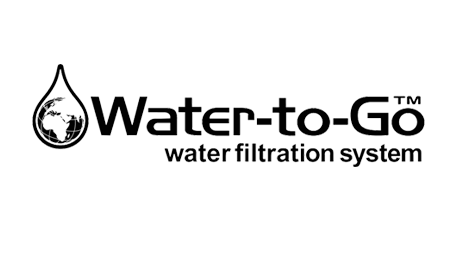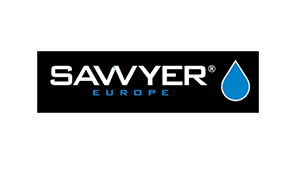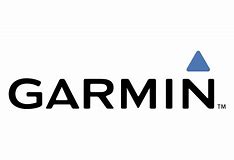
 Ever heard of Ake Nordin? You’d be forgiven if you haven’t. Ake lived in a town called Örnsköldsvik in East Sweden, a keen scout and outdoors man that was not entirely happy with the rucksacks and outdoor equipment of the day. At the age of 14 and prior to a trip to the Västerbotten mountain range Ake borrowed his mothers sewing machine, and after knocking up a satchel made of strong cotton, attaching it to a wooden frame (he knew that carrying equipment on his back required it to be close to his back with a high centre of gravity) he had produced one of the first multi-day hiking rucksacks.
Ever heard of Ake Nordin? You’d be forgiven if you haven’t. Ake lived in a town called Örnsköldsvik in East Sweden, a keen scout and outdoors man that was not entirely happy with the rucksacks and outdoor equipment of the day. At the age of 14 and prior to a trip to the Västerbotten mountain range Ake borrowed his mothers sewing machine, and after knocking up a satchel made of strong cotton, attaching it to a wooden frame (he knew that carrying equipment on his back required it to be close to his back with a high centre of gravity) he had produced one of the first multi-day hiking rucksacks.
Soon friends were commissioning him to do similar for them, orders from local Sami reindeer herders that spend weeks in mountainous terrain would soon follow. 10 years later he would register a new company at his familys 1 bedroom flat and name the company Fjallraven. Humble beginnings.
One of the things I love about this story is it perfectly illustrates that “Necessity is the mother of all invention”. Many outdoors men and women of the day just accepted that the they would have to carry their equipment in ungainly, un-shapely, sagging and uncomfortable sacks strapped to their shoulders. Young Ake had other ideas.
There’s plenty of stories of similar pioneers in the outdoor world; from Yvon Chouinard, pioneering rock climber, environmentalist and owner of Patagonia clothing. The young Chouinard recognised that Pitons (metal spikes hammered into rocks for protection) were damaging the rock. Along with Tom frost he designed a new and “cleaner” way of protecting rock routes by producing chocks/stoppers/hexentrics.
Closer to home (Scotland) John Cunningham and Hamish Macinnes during the 70’s, were experimenting with curved ice axes and refining “front pointing” techniques for ascending steep ice. Hamish Macinnes was the inventor of the first technical all metal ice axe, along with the the Macinnes stretcher still used by MRT worldwide.

North Face of Ben Nevis, Tower ridge centre.
It’s easy to digress from the main subject matter, however, the point is that many of the pioneers in the outdoor equipment world designed their products as a direct reaction to problems they were facing whilst “out in the nature”. The Fjallraven Kaipak range has been designed using the same processes.
The Kaipak comes in three sizes the 28 litre (day trips and summer use) the 38litre (day trips summer/winter, 2 day trips low level) and the 58 litre (multi-day trips, summer and winter). All the guys at BCS use theirs as their main “teaching” rucksacks, as depending on the length of course that we are running there is enough room in the 38 and 58 for group as well as personal gear.
One of my biggest pet hates nowadays is finding a rucksack that doesn’t have hundreds of superfluous straps attached to it. There seems to be a gimmicky trend from some of the big rucksack producers to try and sell a pack based on the amount of equipment that can be strapped, attached and hung from the outside. These extra straps if not taped up can become your worse enemy in poor weather conditions, I’m sure many of you can identify with being repeatedly slapped in the face whilst trying to take a bearing. The Kaipak range is simple, minimalistic and sticks with a small number of features that are “bomb proof” and won’t let you down.
First impressions of the Kaipak is that it’s clean, simplistically functional and almost utilitarian. The Kaipak is made from G1000 heavy duty fabric, making it immensely hard wearing and can be treated with Greenland wax if necessary. Anyone familiar with Cairngorm Granite will testify to the fact that a single seasons use can trash most outdoor gear, yet after 3 seasons worth of personal and professional use the G1000 on our Kaipaks is still looking sweet…….a recurring theme for anyone that owns “historic” Fjallraven clothing.
An absolute must for me personally is a “floating lid”, which the Kaipak 38/58 both have, this allows you to stow the pack full to the brim without putting unnecessary strain on the fastening clips, it also keeps the Kaipak looking neater when fully packed . The top flap is surprisingly spacious for keeping headtorches, spare gloves, hat and anything else that need to be go to quickly.
Inside the top flap there is a waterproof cover in UN Blue, perfect for keeping the Kaipak dry in downpours, but as you may know UN Blue along with orange is one of the first colours picked out by the human eye…..be safe, be seen!

Bradley on the poorly protected/exposed 2nd pitch of January Jigsaw, Glencoe
The front of the Kaipak has a large full length zipped compartment for keeping water proofs in, minimalizing “faff” time. The sides of the pack are equipped with clever cinches that allow you to attach walking poles autonomously from anything else you want to attach on the sides, the cinche itself is metal so isn’t affected by “icing up” during the winter.
The shoulder straps are the perfect width for spreading load across the shoulders and the Aluminium frame and padding on the back structure is spot on. Another great feature on the 38 and 58 is the large hip belt that is exceptionally comfortable, and the two small pouches attached to it are handy for keeping essentials in.
As companies get bigger they tend to lose touch with who their client base is, why they started selling outdoor equipment in the first place. There’s many big brands out there that are not selling equipment as a result of listening to what outdoor recreationalists need from an outdoor garment and are instead focusing on what the market determines from a sales point of view. Fjallraven, despite their growing popularity are still pushing for innovation, when you buy a Fjallraven garment you also buy into their “ethos”.
On a personal note out of all the Fjallraven gear BCS use the Kaipak is probably my favourite piece. It’s proven itself on many different occasions from woodland, mountain and winter use.












 Message an Instructor now
Message an Instructor now